A Guide To Popular Decorating Styles
Transitional
What it is: Transitional style pairs the classic, time-tested appeal of a traditional look with the clean silhouettes and understated color palette of contemporary style. By avoiding the extremes of either — such as the elaborate scrolling and embellishments of traditional style or the most cutting-edge contemporary pieces — transitional style walks an elegant line between the two while carving its own distinct niche.
Where it comes from: As contemporary style gained steam, transitional style developed alongside as a welcome alternative — an elegant combination of the new aesthetic with the comforts of tradition.
Good to know: The wide appeal of transitional style means it can be a beautiful compromise for couples with differing design tastes.
Hallmarks of transitional style:
- Sophisticated furniture
- Serene hues
- Updated classics
- Less-is-more accessories
- Luxurious materials like marble, quartz and plush rugs
This style works well with: Coastal, farmhouse
Traditional
What it is: More than any other style, traditional decorating embraces a sense of history, with heirloom-quality antiques, rich woods, plush carpets and pretty patterns. Although traditional style does tend to be formal, with symmetrical arrangements and refined materials, the ultimate goal is comfort, warmth and a welcoming feel.
Where it comes from: Traditional style traces its roots to 18th- and 19th-century Europe, although a general sense of honoring the past is more central to the style than a focus on any particular region of the world.
Good to know: At first glance it may be hard to distinguish between a traditional and transitional space (and it doesn’t help that the words are so similar), but it’s easier when you know what to look for. Simply put, traditional style adheres firmly to classic designs rooted in history, while transitional style draws from both traditional and contemporary looks.
Hallmarks of traditional style:
This style works well with: Rustic, coastal, Mediterranean
What it is: More than any other style, traditional decorating embraces a sense of history, with heirloom-quality antiques, rich woods, plush carpets and pretty patterns. Although traditional style does tend to be formal, with symmetrical arrangements and refined materials, the ultimate goal is comfort, warmth and a welcoming feel.
Where it comes from: Traditional style traces its roots to 18th- and 19th-century Europe, although a general sense of honoring the past is more central to the style than a focus on any particular region of the world.
Good to know: At first glance it may be hard to distinguish between a traditional and transitional space (and it doesn’t help that the words are so similar), but it’s easier when you know what to look for. Simply put, traditional style adheres firmly to classic designs rooted in history, while transitional style draws from both traditional and contemporary looks.
Hallmarks of traditional style:
- Antiques and new pieces with a timeless feel
- Refined color palette
- Classic comforts such as a crackling fire on the hearth and floor-to-ceiling bookshelves
- Luxurious materials like marble and rich woods
- Intricate architectural details
This style works well with: Rustic, coastal, Mediterranean
Contemporary
What it is: In a nutshell, contemporary style is current and new — it’s what today’s designers are creating. Of course, newness isn’t the only defining feature of this popular look. If you think of a spectrum of ornament, with the most embellished being traditional style, contemporary would sit firmly at the opposite end. This style embraces negative space, strong shapes and clean lines, while leaving room for interpretation and experimentation.
Where it comes from: Beginning after the midcentury period, contemporary style has been growing and evolving since the 1970s — and will continue to change as designers are influenced by the here and now.
Good to know: Contemporary spaces are often minimal and white but not always; they can also be vibrant, playful and full of color and pattern, as evidenced by the rainbow of chair options shown in this space from Habitat London.
Hallmarks of contemporary style:
This style works well with: Rustic, coastal
What it is: In a nutshell, contemporary style is current and new — it’s what today’s designers are creating. Of course, newness isn’t the only defining feature of this popular look. If you think of a spectrum of ornament, with the most embellished being traditional style, contemporary would sit firmly at the opposite end. This style embraces negative space, strong shapes and clean lines, while leaving room for interpretation and experimentation.
Where it comes from: Beginning after the midcentury period, contemporary style has been growing and evolving since the 1970s — and will continue to change as designers are influenced by the here and now.
Good to know: Contemporary spaces are often minimal and white but not always; they can also be vibrant, playful and full of color and pattern, as evidenced by the rainbow of chair options shown in this space from Habitat London.
Hallmarks of contemporary style:
- Up-to-the-minute trends and designs
- Sculptural furnishings
- Open space
- Cutting-edge technology
- Minimal embellishments
This style works well with: Rustic, coastal
Modern
What it is: Modern architecture and furnishings emphasize form and structure rather than surface ornamentation — think of large expanses of glass; smooth surfaces such as concrete, steel, stone and wood; and accents of chrome and black leather.
Where it comes from: Modern style has its roots in the modernist movement of the early and mid-20th century, particularly modernist art and the Bauhaus, an influential art and design school in Germany active during the early part of the 20th century.
Good to know: Modern, midcentury and contemporary styles share a few important features: All emphasize clean lines and minimal adornment. You can think of modern style as the umbrella that midcentury style lives under. Contemporary style, in contrast, is not tied to any particular period — it’s simply whatever is happening in the current design moment.
Hallmarks of modern style:
This style works well with: Scandinavian, industrial, midcentury, farmhouse
What it is: Modern architecture and furnishings emphasize form and structure rather than surface ornamentation — think of large expanses of glass; smooth surfaces such as concrete, steel, stone and wood; and accents of chrome and black leather.
Where it comes from: Modern style has its roots in the modernist movement of the early and mid-20th century, particularly modernist art and the Bauhaus, an influential art and design school in Germany active during the early part of the 20th century.
Good to know: Modern, midcentury and contemporary styles share a few important features: All emphasize clean lines and minimal adornment. You can think of modern style as the umbrella that midcentury style lives under. Contemporary style, in contrast, is not tied to any particular period — it’s simply whatever is happening in the current design moment.
Hallmarks of modern style:
- Strong, sculptural shapes
- Ample negative space
- Crisp, clean color palette
- Minimal embellishment
- Furniture with sleek silhouettes
This style works well with: Scandinavian, industrial, midcentury, farmhouse
Midcentury
What it is: With an emphasis on strong shapes, clean lines, iconic designs and the graphic arts, midcentury style nods to the past while maintaining relevance to today’s world.
Where it comes from: Midcentury style has its roots in the middle of the 20th century, from the mid-1940s to about 1970 — but that doesn’t mean today’s midcentury modern style has to feel like a period piece.
Good to know: Classic pieces designed by midcentury greats including Eero Saarinen, George Nelson, Charles and Ray Eames, and Hans Wegner are still being produced today. Incorporating a few iconic pieces — like the Eames Molded Fiberglass chairs and Nelson Bubble lamps shown in this space by Lewis / Schoeplein Architects — is sure to elevate your midcentury modern space.
Hallmarks of midcentury style:
This style works well with: Modern, industrial, Scandinavian
What it is: With an emphasis on strong shapes, clean lines, iconic designs and the graphic arts, midcentury style nods to the past while maintaining relevance to today’s world.
Where it comes from: Midcentury style has its roots in the middle of the 20th century, from the mid-1940s to about 1970 — but that doesn’t mean today’s midcentury modern style has to feel like a period piece.
Good to know: Classic pieces designed by midcentury greats including Eero Saarinen, George Nelson, Charles and Ray Eames, and Hans Wegner are still being produced today. Incorporating a few iconic pieces — like the Eames Molded Fiberglass chairs and Nelson Bubble lamps shown in this space by Lewis / Schoeplein Architects — is sure to elevate your midcentury modern space.
Hallmarks of midcentury style:
- Clean, uncluttered spaces
- Natural wood
- Iconic furnishings from midcentury designers
- Graphic patterns
- Organic shapes
This style works well with: Modern, industrial, Scandinavian
Farmhouse
What it is: Farmhouse style nods to the satisfying simplicity of regional, rural architecture while embracing modern comforts. Hardworking furnishings and natural textiles are invitingly down-to-earth, creating a look that’s easy (and practical) to live with, no matter which end of the rustic-to-modern spectrum your interpretation of the look lands on.
Where it comes from: Each region has its own particular style of farmhouse, but the commonality is a practical approach to design that favors function over form.
Good to know: When we talk about farmhouse style today, we’re really talking about modern farmhouse style — attempting to re-create a historically accurate farmhouse would be a different undertaking altogether. Whether the pieces you choose are old or new, the main idea is that they share the same utilitarian, simple aesthetic.
Hallmarks of farmhouse style:
This style works well with: Modern, rustic, industrial, transitional
What it is: Farmhouse style nods to the satisfying simplicity of regional, rural architecture while embracing modern comforts. Hardworking furnishings and natural textiles are invitingly down-to-earth, creating a look that’s easy (and practical) to live with, no matter which end of the rustic-to-modern spectrum your interpretation of the look lands on.
Where it comes from: Each region has its own particular style of farmhouse, but the commonality is a practical approach to design that favors function over form.
Good to know: When we talk about farmhouse style today, we’re really talking about modern farmhouse style — attempting to re-create a historically accurate farmhouse would be a different undertaking altogether. Whether the pieces you choose are old or new, the main idea is that they share the same utilitarian, simple aesthetic.
Hallmarks of farmhouse style:
- Simple, functional furniture
- Wall paneling
- Sliding barn doors
- Natural and historic colors such as golden wheat, sage green and robin’s-egg blue
- Imperfect and patinaed finishes
This style works well with: Modern, rustic, industrial, transitional
Rustic
What it is: Inspired by woods, plains, rivers and lakes, rustic style can be as simple and pared-back as a one-room log cabin or as jaw-dropping as a ski lodge perched on a mountainside. Materials are raw and unadulterated, with exposed wood beams, brick and stone; big, comfy furniture; and warm, cozy textiles.
Where it comes from: Rustic style embraces the natural beauty of the outdoors and the dwellings traditionally situated in wild areas — log cabins, stone lodges and rustic ranch homes.
Good to know: While rustic style is inspired by the past, today’s interpretation can lean contemporary with more streamlined furnishings, depending on your design sensibility.
Hallmarks of rustic style:
This style works well with: Farmhouse, traditional, contemporary, industrial
What it is: Inspired by woods, plains, rivers and lakes, rustic style can be as simple and pared-back as a one-room log cabin or as jaw-dropping as a ski lodge perched on a mountainside. Materials are raw and unadulterated, with exposed wood beams, brick and stone; big, comfy furniture; and warm, cozy textiles.
Where it comes from: Rustic style embraces the natural beauty of the outdoors and the dwellings traditionally situated in wild areas — log cabins, stone lodges and rustic ranch homes.
Good to know: While rustic style is inspired by the past, today’s interpretation can lean contemporary with more streamlined furnishings, depending on your design sensibility.
Hallmarks of rustic style:
- Rough-hewn wood
- Natural hues
- Weathered materials such as live-edge wood, heavy beams, leather, stone, brick, copper and slate
- Rugged furnishings
- Cozy, warming touches, including fireplaces, overstuffed armchairs and comfy textiles
This style works well with: Farmhouse, traditional, contemporary, industrial
Industrial
What it is: Often seen in urban lofts and converted industrial spaces, this style can be created through the use of industrial finishes and decor wherever you live. While there’s no doubt that industrial style is gritty, the ultimate goal is to find beauty and creativity in raw materials and open spaces.
Where it comes from: Industrial style draws inspiration from factories and warehouses, where the furnishings are utilitarian and tough and the materials are raw.
Good to know: With so much metal and open space, industrial-style homes can run the risk of feeling cold. Make sure your space feels welcoming with accent pieces that add textural interest and warmth, such as filament-bulb light fixtures, potted plants and candles.
Hallmarks of industrial style:
This style works well with: Modern, rustic, farmhouse, midcentury
What it is: Often seen in urban lofts and converted industrial spaces, this style can be created through the use of industrial finishes and decor wherever you live. While there’s no doubt that industrial style is gritty, the ultimate goal is to find beauty and creativity in raw materials and open spaces.
Where it comes from: Industrial style draws inspiration from factories and warehouses, where the furnishings are utilitarian and tough and the materials are raw.
Good to know: With so much metal and open space, industrial-style homes can run the risk of feeling cold. Make sure your space feels welcoming with accent pieces that add textural interest and warmth, such as filament-bulb light fixtures, potted plants and candles.
Hallmarks of industrial style:
- Salvaged and found elements used as decor
- Simple, workhorse furniture
- Plenty of wide-open space
- Exposed raw materials such as concrete flooring, brick walls and steel support beams
- Neutral color palette
This style works well with: Modern, rustic, farmhouse, midcentury
Mediterranean
What it is: Mediterranean-style spaces can be cool and breezy or rich and warm, calling to mind sun-drenched land and sparkling water. Key elements to look for include smooth expanses of cool white plaster, dark wood beams, rich textiles and intricate tilework.
Where it comes from: With roots in countries spanning the Mediterranean region — including Spain, Greece, Italy, France and Morocco, to name a few — this style is as diverse as the area it springs from.
Good to know: While traditionally Mediterranean spaces have tended toward warm hues and heavy wrought iron details, today’s iterations often take a lighter approach, with plenty of white space to offset the rich tilework and natural wood.
Hallmarks of Mediterranean style:
This style works well with: Traditional, coastal
What it is: Mediterranean-style spaces can be cool and breezy or rich and warm, calling to mind sun-drenched land and sparkling water. Key elements to look for include smooth expanses of cool white plaster, dark wood beams, rich textiles and intricate tilework.
Where it comes from: With roots in countries spanning the Mediterranean region — including Spain, Greece, Italy, France and Morocco, to name a few — this style is as diverse as the area it springs from.
Good to know: While traditionally Mediterranean spaces have tended toward warm hues and heavy wrought iron details, today’s iterations often take a lighter approach, with plenty of white space to offset the rich tilework and natural wood.
Hallmarks of Mediterranean style:
- Colorful tile
- Rich, earthy color palette
- Sturdy, classic furnishings
- Natural materials such as wood, brick and stone
- Ornamented details like carved woodwork, painted ceramics and patterned textiles
This style works well with: Traditional, coastal
Scandinavian
What it is: Scandinavian style features bright, light spaces and furnishings with clean lines, bold graphic patterns and a welcoming coziness.
Where it comes from: Scandinavian style has its roots in the northern countries of Denmark, Sweden and Norway in the early-to-mid-20th-century. As the modernist movement flourished in Western Europe, Scandinavia refined its own aesthetic: one of simplicity, minimalism, light and a connection to nature.
Good to know: Unlike strictly modern spaces, Scandinavian-style interiors tend to include a more eclectic mix of vintage and contemporary pieces and a more playful attitude.
Hallmarks of Scandinavian style:
This style works well with: Modern, midcentury
What it is: Scandinavian style features bright, light spaces and furnishings with clean lines, bold graphic patterns and a welcoming coziness.
Where it comes from: Scandinavian style has its roots in the northern countries of Denmark, Sweden and Norway in the early-to-mid-20th-century. As the modernist movement flourished in Western Europe, Scandinavia refined its own aesthetic: one of simplicity, minimalism, light and a connection to nature.
Good to know: Unlike strictly modern spaces, Scandinavian-style interiors tend to include a more eclectic mix of vintage and contemporary pieces and a more playful attitude.
Hallmarks of Scandinavian style:
- Light color palette
- A mix of old and new
- Iconic furnishings from Scandinavian designers such as Arne Jacobsen, Hans Wegner and Verner Panton
- Clean and clutter-free
- Natural materials and textures
This style works well with: Modern, midcentury
Coastal
What it is: Simply put, coastal style is inspired by the beach. This leaves a lot of room for interpretation, but the basics are ample light, natural materials, breezy spaces and a casual feel. Slipcovered furniture, woven accents and the colors of sea and sky make for a relaxing atmosphere with wide appeal.
Where it comes from: Coastal style comes in numerous versions, depending on the region of coastline you’re inspired by (or live near). A nautical twist on coastal style is especially associated with areas like New England (think Nantucket and Cape Cod) that have a long history of seafaring. Inspired by turquoise waters and lush flora? A laid-back, tropical approach to coastal style might be right for you.
Good to know: You don’t need to live by the beach to make coastal style work! It’s all about embracing the mood of living on the coast, not necessarily living in an actual beach house.
Hallmarks of coastal style:
This style works well with: Traditional, transitional, contemporary, Mediterranean
What it is: Simply put, coastal style is inspired by the beach. This leaves a lot of room for interpretation, but the basics are ample light, natural materials, breezy spaces and a casual feel. Slipcovered furniture, woven accents and the colors of sea and sky make for a relaxing atmosphere with wide appeal.
Where it comes from: Coastal style comes in numerous versions, depending on the region of coastline you’re inspired by (or live near). A nautical twist on coastal style is especially associated with areas like New England (think Nantucket and Cape Cod) that have a long history of seafaring. Inspired by turquoise waters and lush flora? A laid-back, tropical approach to coastal style might be right for you.
Good to know: You don’t need to live by the beach to make coastal style work! It’s all about embracing the mood of living on the coast, not necessarily living in an actual beach house.
Hallmarks of coastal style:
- Whitewashed surfaces
- Bare wood floors
- Natural materials such as sea grass, jute, wicker, rattan, linen and cotton
- Furniture built for relaxation, such as sectional sofas, hanging chairs and easy, breezy slipcovered pieces
- Colors inspired by the coast
This style works well with: Traditional, transitional, contemporary, Mediterranean
Eclectic
What it is: Eclectic style is curated and intentionally composed, bringing in pieces from many styles and eras to create a fully personalized look. Instead of being hemmed in by rules and conventions, eclectic style offers free rein to explore any and all areas of the design world that appeal to you, from funky vintage pieces to cutting-edge contemporary designs and everything in between.
Where it comes from: Architects and designers have a long history of blending styles from the past to create something new, and today there’s more material than ever to choose from.
Good to know: The juxtaposition of old and new, traditional and modern is what makes an eclectic space really come alive. Furniture tends to be mismatched rather than part of a set, with vintage finds mixed in among new pieces and interesting objects.
Hallmarks of eclectic style:
What it is: Eclectic style is curated and intentionally composed, bringing in pieces from many styles and eras to create a fully personalized look. Instead of being hemmed in by rules and conventions, eclectic style offers free rein to explore any and all areas of the design world that appeal to you, from funky vintage pieces to cutting-edge contemporary designs and everything in between.
Where it comes from: Architects and designers have a long history of blending styles from the past to create something new, and today there’s more material than ever to choose from.
Good to know: The juxtaposition of old and new, traditional and modern is what makes an eclectic space really come alive. Furniture tends to be mismatched rather than part of a set, with vintage finds mixed in among new pieces and interesting objects.
Hallmarks of eclectic style:
- Layered textiles
- Confident color palette
- Curated collections
- Bold statement pieces
- Juxtaposition of different styles
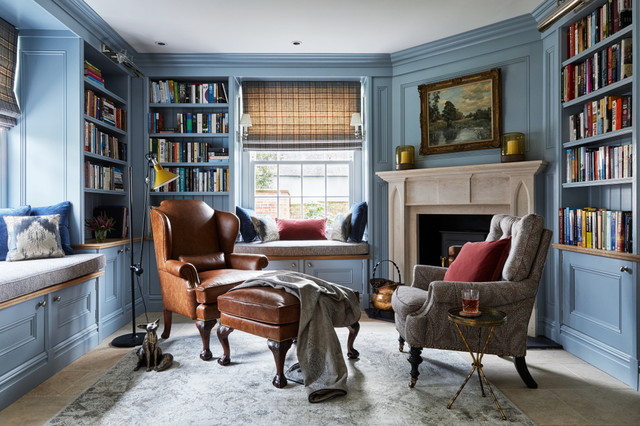
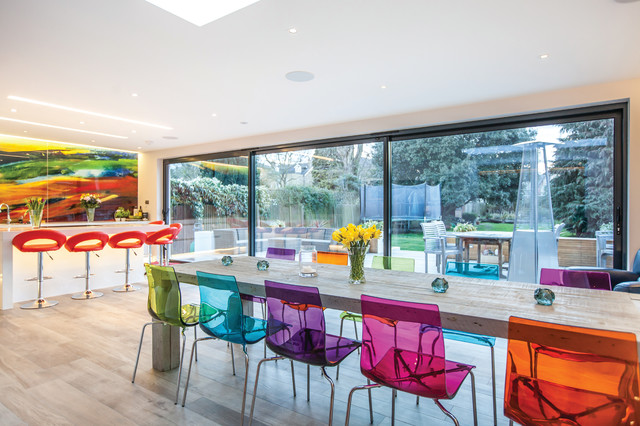
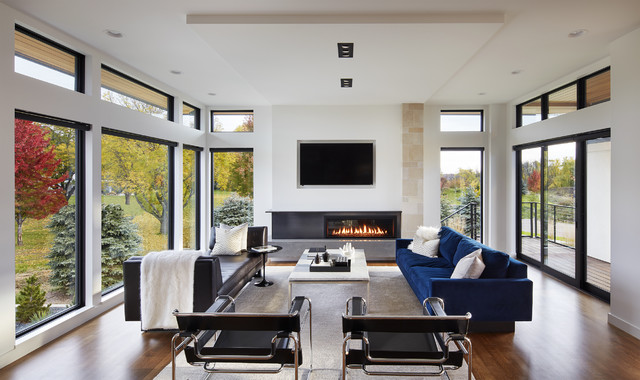
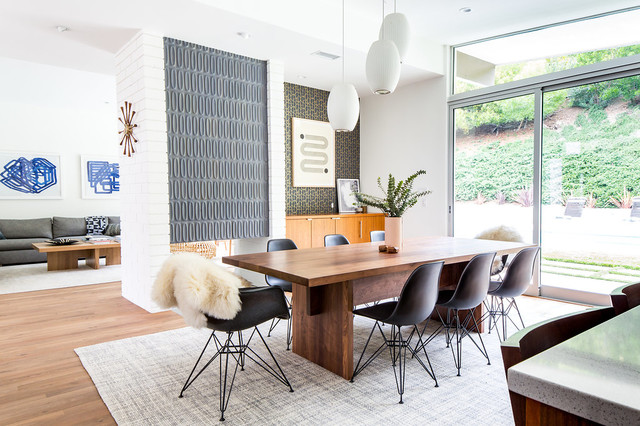
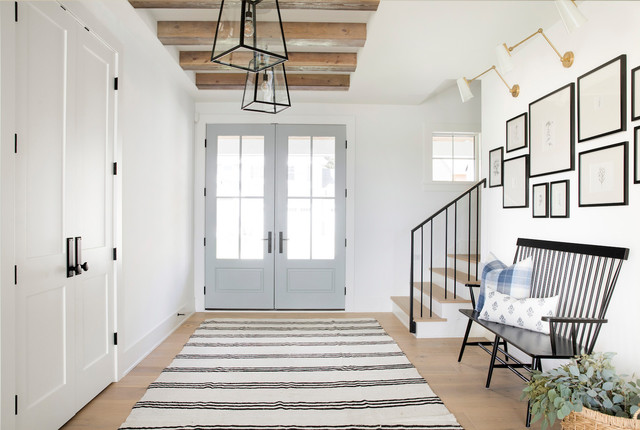
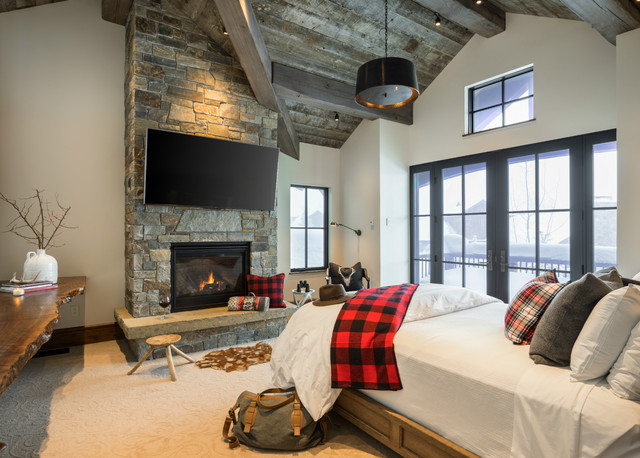
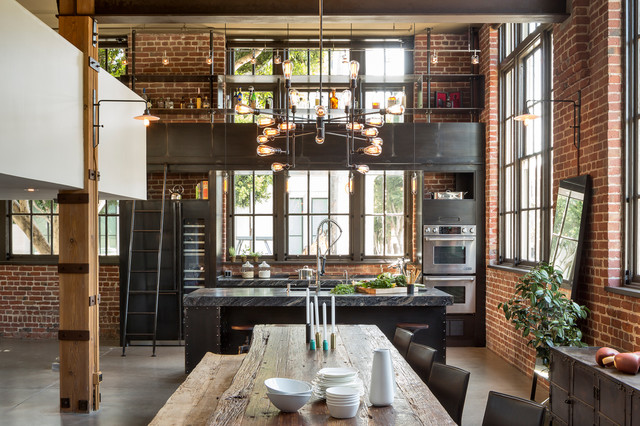
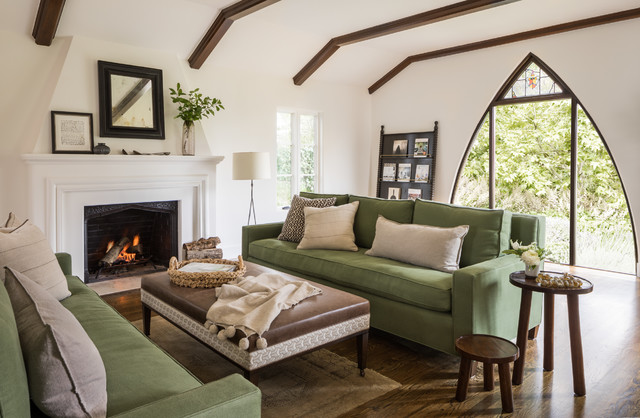
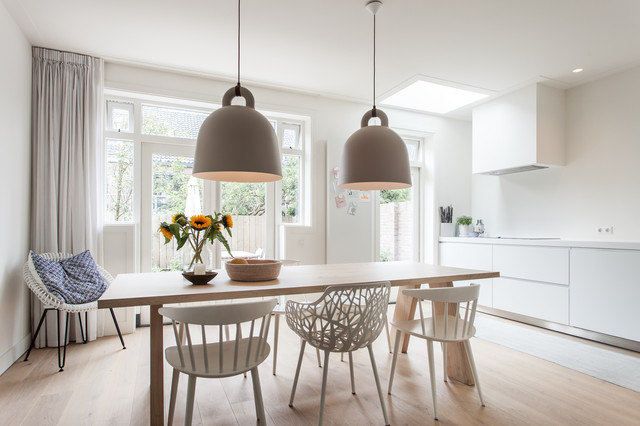
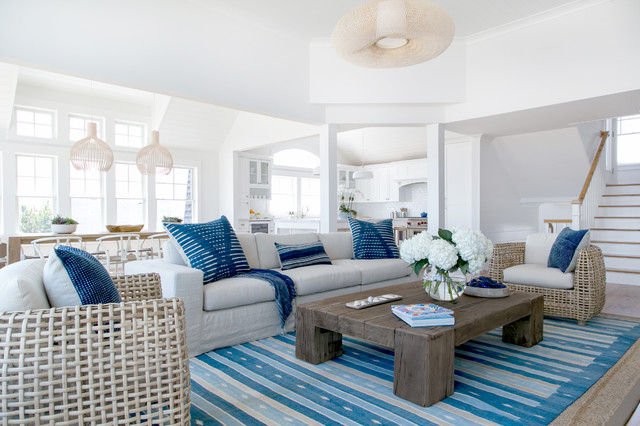

Comments
Post a Comment